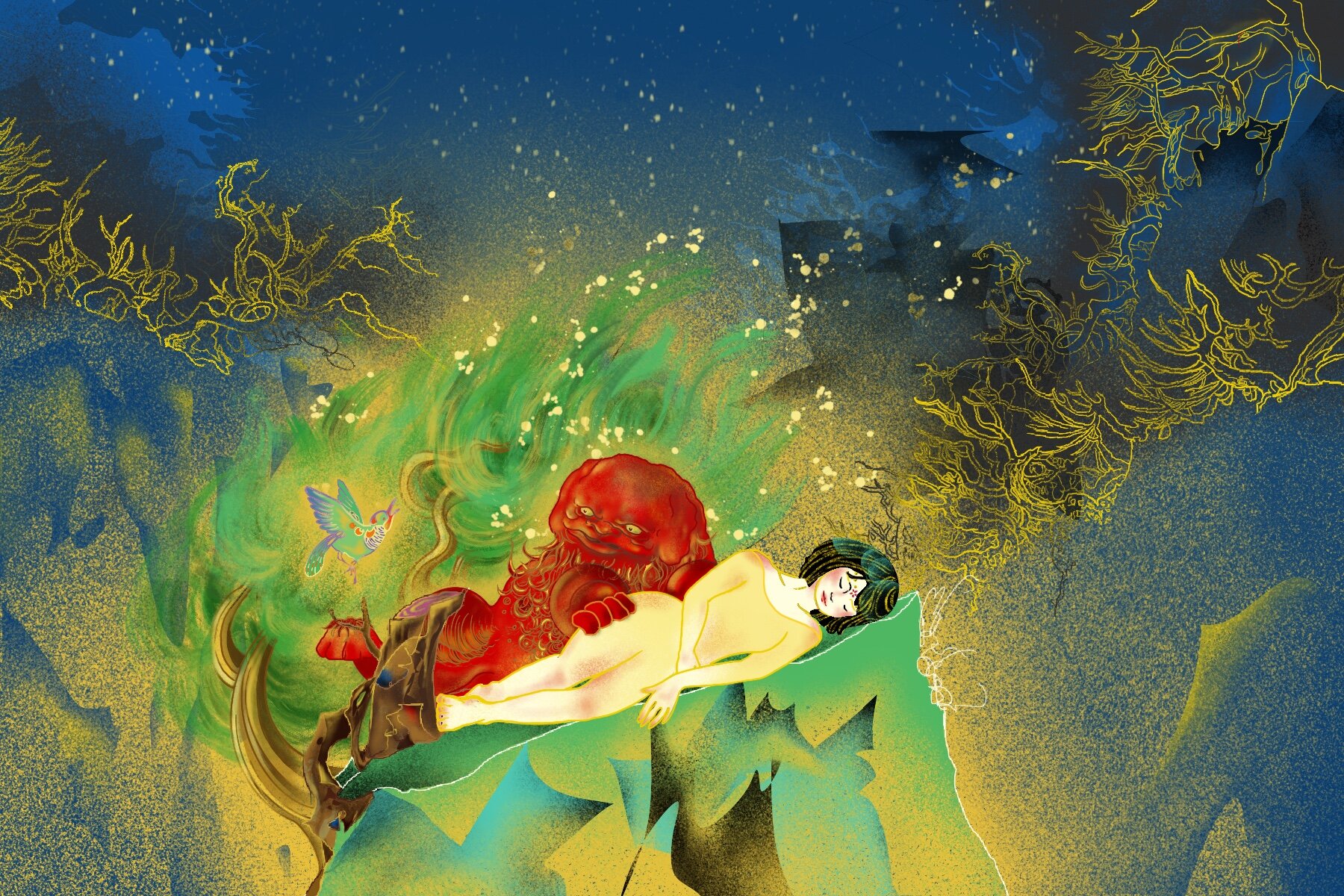Transformation of Home
“Transformations of Home” concentrates on the home as a locus for change. The artists in this section document how their relationships with “home” have been made unfamiliar, whether because of the current global pandemic, growth during college, or other reasons. Spanning a variety of mediums and subjects, each artwork reflects the lived experiences of the artists as they witness the familiar becoming strange.
“Transformations of Home” concentrates on the home as a locus for change. The artists in this section document how their relationships with “home” have been made unfamiliar, whether because of the current global pandemic, growth during college, or other reasons. Spanning a variety of media and subjects, each artwork reflects the lived experiences of the artists as they witness the familiar becoming strange.
HOMID-19 (2020)
Manchen Hu
Stanford University, Huazhong University of Science and Technology
Wuhan, China
Manchen dedicates himself to navigating the combination of art and science in search of the uniformity and convergence of the two. He wishes to provoke the sensations that human beings are losing in the era of technological development and in turn use technology to extend the border of the art world.

Home is Where I Escaped From and Where Haunts Me (2020)
Jianfei Lyu
Wellesley College
Beijing, China
“The series of photographs is from the quarantined months from March to May, containing time I spent at school, on the airplane flying to my home country, and the fourteen days of strict quarantine in hotels. I gradually lose my sanity during these days. But sometimes I found the campus is like a sanatorium, and afraid of the idea that one day the world will go back to normal again and endless pressure and competition resume. How funny it is that now my life is almost back to before and I delved into the old pattern with complete ease. Looking back to this time, the photos only exist in that dimension. I missed my home when I was on campus, anxious about getting a flight ticket, but after I went back, I'm again anxious about US-China relations. We are all feeble leaves straying in the flood where no direction is foretold. But we remain strong, and we are witnessing everything.”


































Do you want to talk about it? (Imagine if I had said no); Room for One (2020)
Grace Chen
Rhode Island School of Design
Canada
“Revolving around the notion of universality in specificity, my work aims to evoke genuine self-reflection whether that be a minor change in disposition or a drastic shift in perspective. I am motivated by crafting spaces of warmth and immersive realities through traditional and digital drawing and painting, sometimes even merging these means for animation, for the enjoyment of others.”


Untitled (2020)
Mollie Redman
Brown University
Bedford, NH, US
“I painted this while outside of my “home” in Providence. Calling college “home” doesn’t feel natural because home has historically been where my whole family lives. In the painting the chair is not broken, so it is unreasonable to place a cone on it. However, the longer the cone sits there, the more it feels like it belongs on the chair. Similarly, the longer I have been in college, the more Providence feels like home.”
Phone Call (2020)
Mulan Mu
Wellesley College
Ningbo, China
“I am 7000 miles away from the place I called ‘home,’ with no idea when I could go back. My only connection with my home is through the phone. Home is a phone call to my other self, who is from another dimension carrying memories and feelings of home, yet existing theoretically. In this process, ‘home’ decays into something fleeting and theoretical, too. We talked about everything, good or bad, except going back.”
Cultural Associations of the Hometown
Home extends beyond one’s immediate residence to the city and cultural surroundings. In this section, artists re-examine their hometowns and depict cultural symbols associated with specific places. Memories and perceptions of the hometown are often fluid and can take a variety of forms--from fractured elements pieced together and abstracted representation of a townscape to portrayals of festivities and landmarks. Works in this section show the influence of larger cultural environments on artistic expressions and identities.
Home extends beyond one’s immediate residence to the city and cultural surroundings. In this section, artists re-examine their hometowns and depict cultural symbols associated with specific places. Memories and perceptions of the hometown are often fluid and can take a variety of forms--from fractured elements pieced together and abstracted representation of a townscape to portrayals of festivities and landmarks. Works in this section show the influence of larger cultural environments on artistic expressions and identities.
Home is an Uncountable Noun (2018-2019)
Ruowei Gong
University of Virginia
Shanghai, China
“‘Home’ is an uncountable noun. A place where cars could hardly pass—this was my only impression of Beijing’s hutong. Not until I took a thorough walk did I realize how miraculous it is. Under a narrow ray of sky, every aspect of the lives of residents is displayed. The tiny, obscure zone has been the home of several generations, and it is impossible to know the exact number of residents. Aged trees, paint-shedding walls, outdated decorations—they are the carriers of history, recording the lives of each generation. Unfortunately, many hutongs, the ‘home’ of countless people in history and present, are to be demolished and replaced by modern architectures. All the traces will be erased in reality, so let’s not abandon the ‘home’ in memory.”
Heavenly Joy (2019); Lao Ge (2018)
Yuheng (Peter) Deng
Haverford College
Chengdu, China
“I believe that art is a vocal cord that sends the artist’s opinion to the world. In this exhibition, I wish to demonstrate my home from two perspectives and dive into the stories of people’s lives and struggles in Chengdu.”


Habitat (2020)
Zyra Zhang
School of Visual Arts
Zhejiang, China
“Born in Yuyao, a historical and beautiful city in Zhejiang, the ancient Chinese culture transfused into my blood at a young age. At that point, a calligraphy brush opened my door to the art world. Since then, I have been developing my own visual language and color palettes that can bring new life to my art. I like keeping track of my daily thoughts, dreams, and whatever interesting going on in my mind. It is exciting to participate in this exhibition to share my feelings and definition of "home". I hope my art can echo with you!”
My Hometown - Daliang Mountains of Sichuan series 我的家乡 - 四川大凉山系列 (2019-2020)
Xiao Sun 孙晓
Art College of Guizhou University, Hubei Institute of Fine Arts
Sichuan, China
As a child born and raised under the nurture of the culture in Liangshan, I feel the urge to pick up my brush for my hometown, the Liangshan Yi Autonomous Prefecture (四川省凉山彝族自治州). It sits at the intersection of Yunnan and Sichuan and is home to a large population of the Yi people (彝族), along with other ethnic minority groups in China. It also has one of the four spaceports in China.
The people of my hometown are kind, friendly, hospitable, and enthusiastic. They greet friends and guests with their best cuisine, play the Moon Lute at gatherings, and invite visitors to sing, drink and celebrate the wondrous night.
Impressions of the Torch Festival of the Yi, the New Year Festival (阔时节) of the Lisu (傈僳族), and the spaceport are engraved deep in my mind. Black, red, and yellow are the three main colors used by the Yi in their traditional garments and lacquerware. In Yi's culture, black is the earth's color, representing solemnity; red is the color of bravery and passion; and yellow is the color of light and aspirations for the future. I use these colors and totems as an artistic representation to depict my hometown.



Abstracted Constructions of Home
The idea of home is not always based in a concrete, physical space. “Home” is often a constructed concept that takes the elements of daily life and becomes something entirely new. In abstraction we see the greatest diversity in artistic expressions: artists break away from traditional ways of representation and use media such as styrofoam, charred wood, concrete, and wool to piece together their “home” and their experiences with its transformations.
The idea of home is not always based in a concrete, physical space. “Home” is often a constructed concept that takes the elements of daily life and becomes something entirely new. In abstraction we see the greatest diversity in artistic expressions: artists break away from traditional methods of representation and use media such as styrofoam, charred wood, concrete, and wool to piece together their “home” and their experiences with its transformations.
Series (2020)
Buwei
Pratt Institute, China Academy of Art
Wuhan, China
“I use different ways to paint everything I want; my art comes from all the content, shapes and lines in my experience that interest me.”




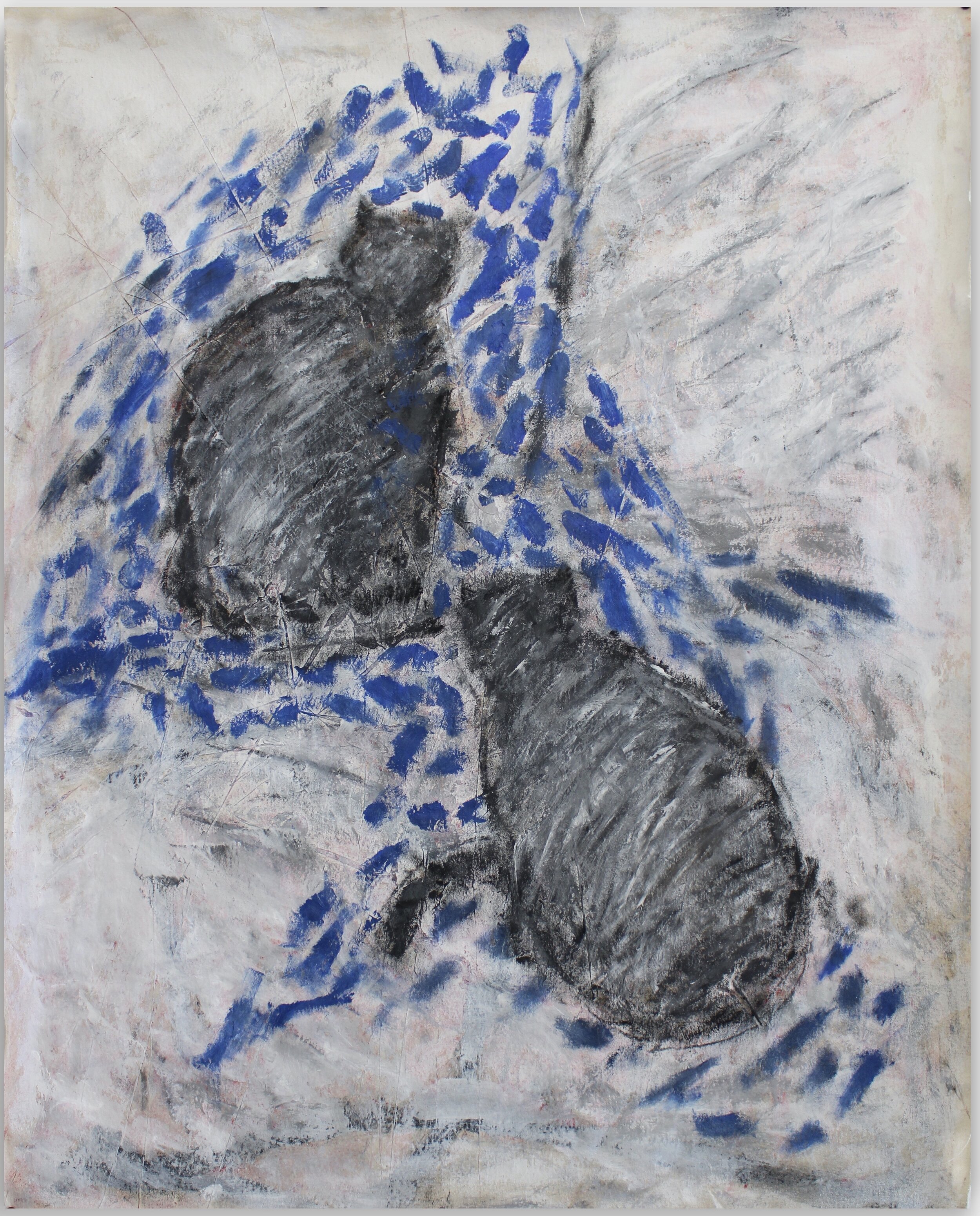
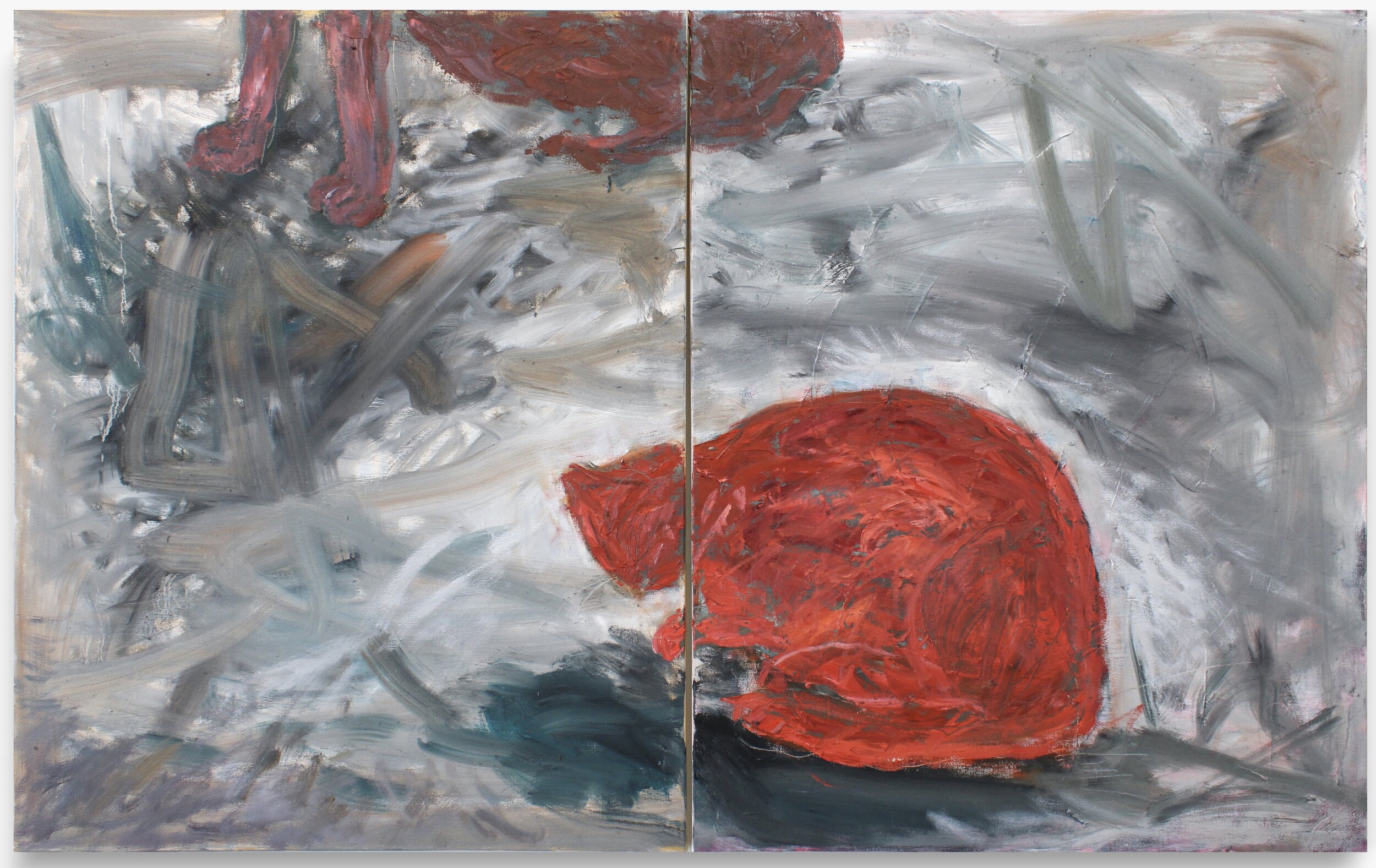

Artificial Protection (2020)
Kai Hong Cheung
University of the Arts London, Chelsea College
Hong Kong, China
*Click on the thumbnail below or here to watch the video.
Cheung has always been interested in nature, biology, and religion. When he was young, he liked to collect materials from the park and make small decorations. At a young age, he developed an interest in questions surrounding life and death when his grandmother passed away. Cheung also enjoys depicting Buddhism. He has always wanted to turn traditional Buddhist art into contemporary drawings, through which he hopes people can re-focus on and understand Buddhism from a new perspective. In addition, he cares deeply about current affairs. According to Cheung, “in recent years, I’ve noticed that society has become increasingly chaotic, but people around me are ignoring the problems and only caring about themselves.” He hopes to express societal issues and events through his art.
An Unbalanced Relationship that is Abandoned 被遗弃的失衡 (2020)
Siyi Li 李思艺
Academy of Arts & Design, Tsinghua University
Sichuan, China
As a work that focuses on the theme of “home,” the inspiration comes from the unbalance experienced by traditional rural family systems under the clash of contemporary civilization. In old family traditions, many generations of the same family live together, like the entrenched roots in this work. However, this way of living is shattered by the one child policy and contemporary societal developments. Young people move to different places to seek better lives. Now, rural areas are like empty shells surrounded by cities; the only remnant is abandoned buildings, lifeless like charred roots. As such, the concrete in this work is used to represent urbanization and contemporary civilization. This work also attempts to express the struggles experienced by those who cannot adapt and integrate into contemporary society and seeks to question their future directions.


Green Cocoon 绿茧 (2020)
Wenjuan Wan 万文娟
Academy of Arts & Design, Tsinghua University
Henan, China
“How the filaments of cocoons intertwine, encircle, tear, and shatter is similar to the concept of ‘home.’ I made many different shapes of cocoons at different stages of life to represent the contradictory and complex relationship between home and life. Is ‘home’ protective or constraining? Is maturity surprising or conflicting? Touchable spheres of ‘cocoons’ made from felt, the moist and hollow inside, the strong steel wire that supports, and the vitality of the rich green… these are my thoughts on ‘home and life.’”
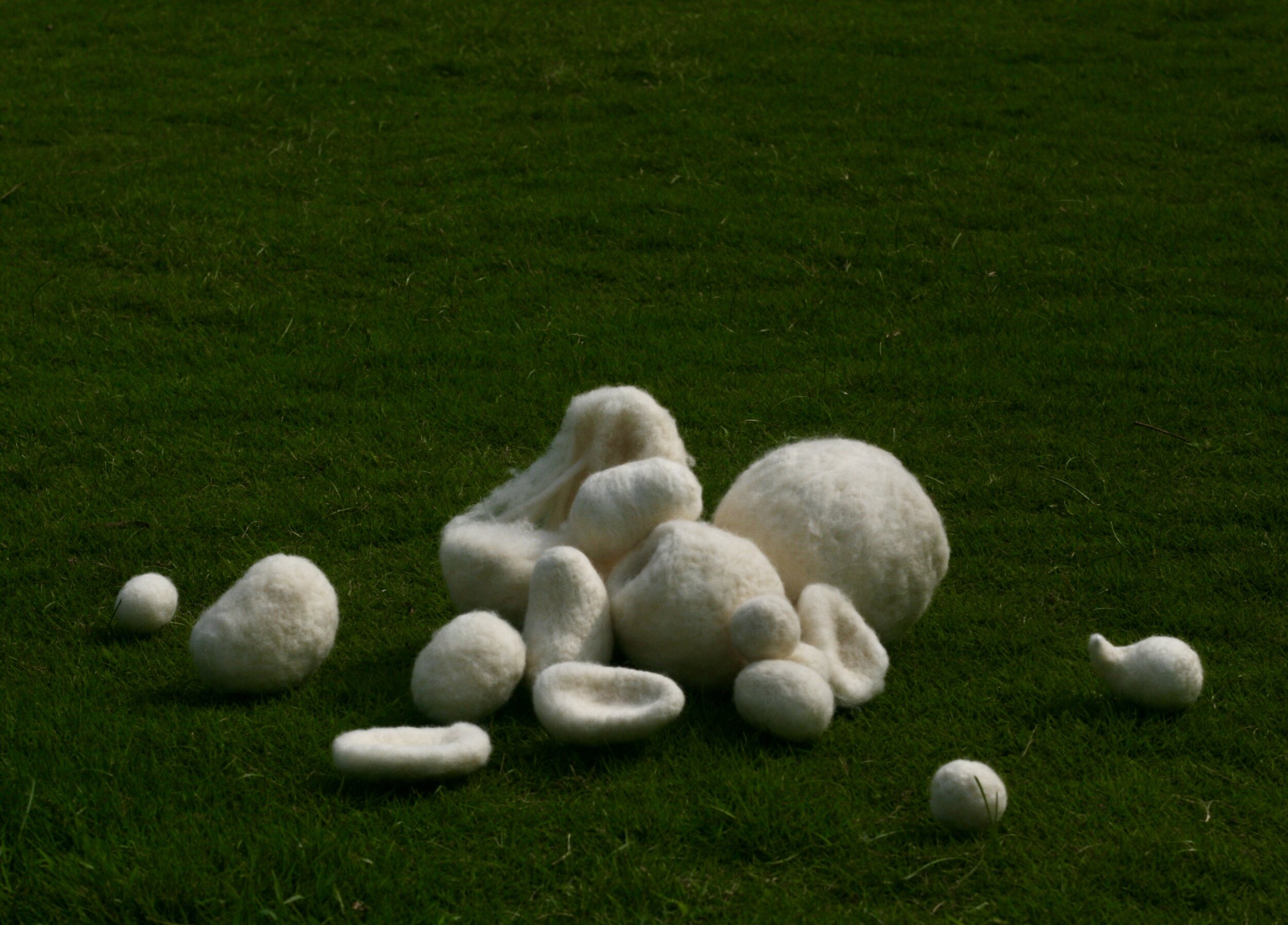
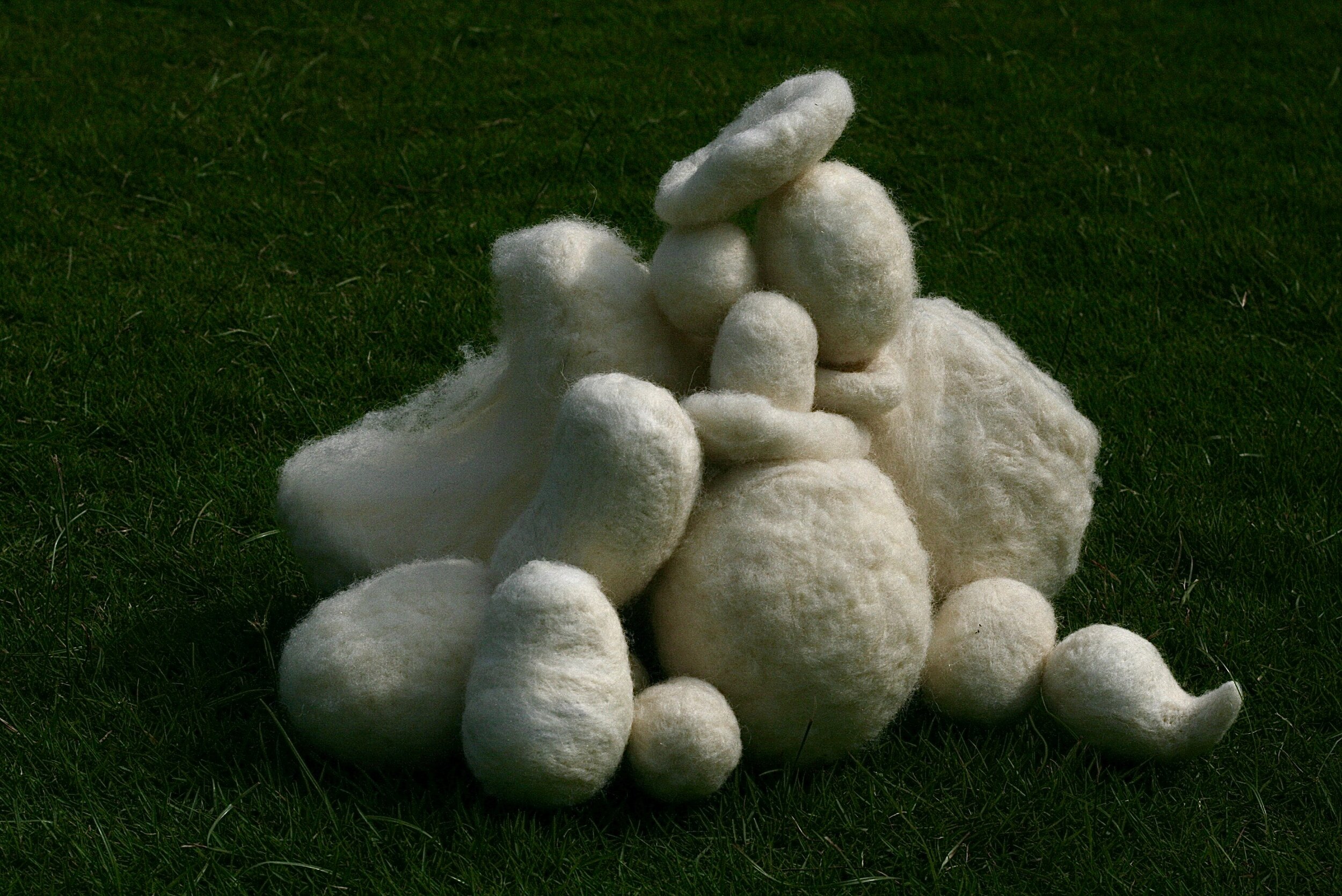
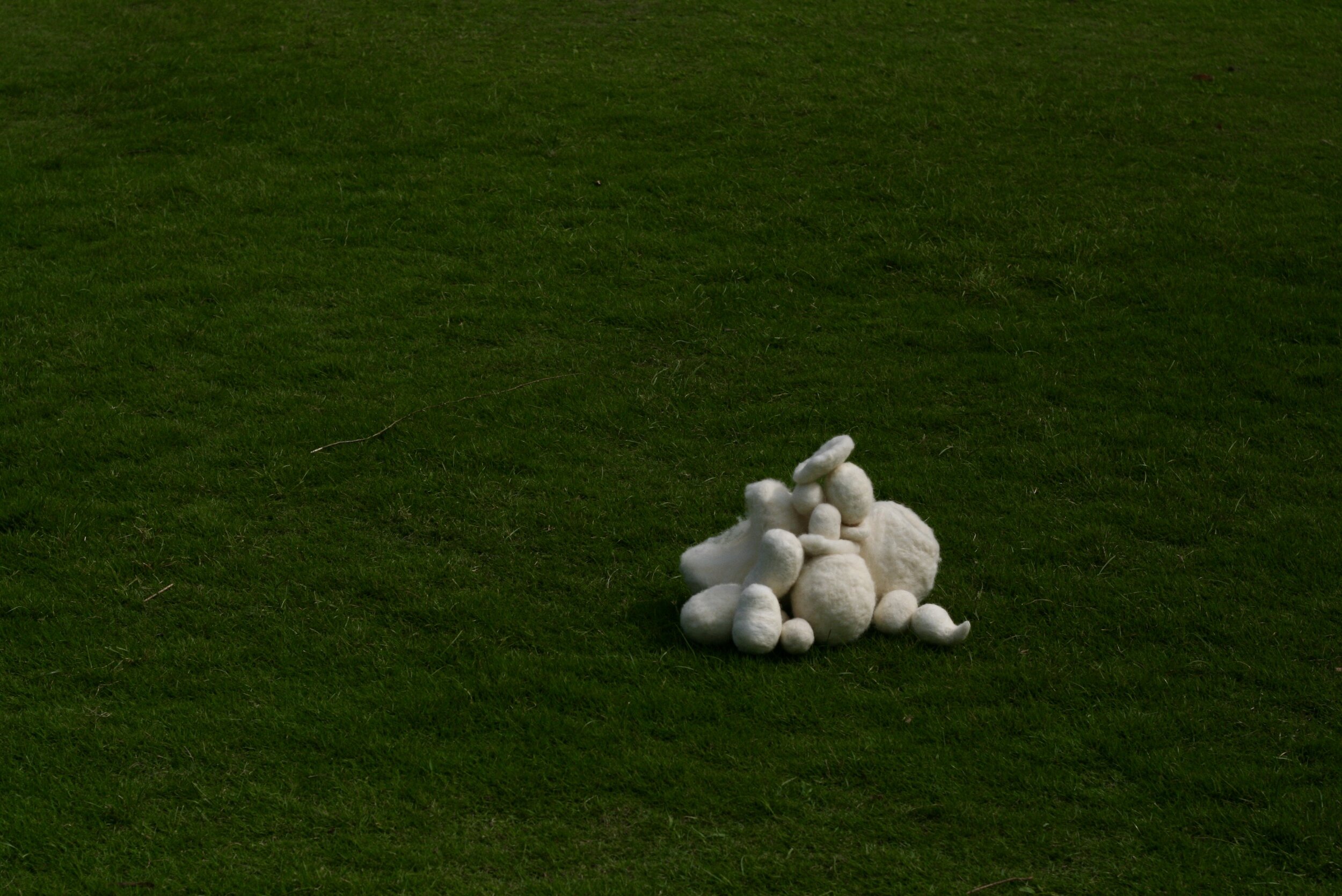
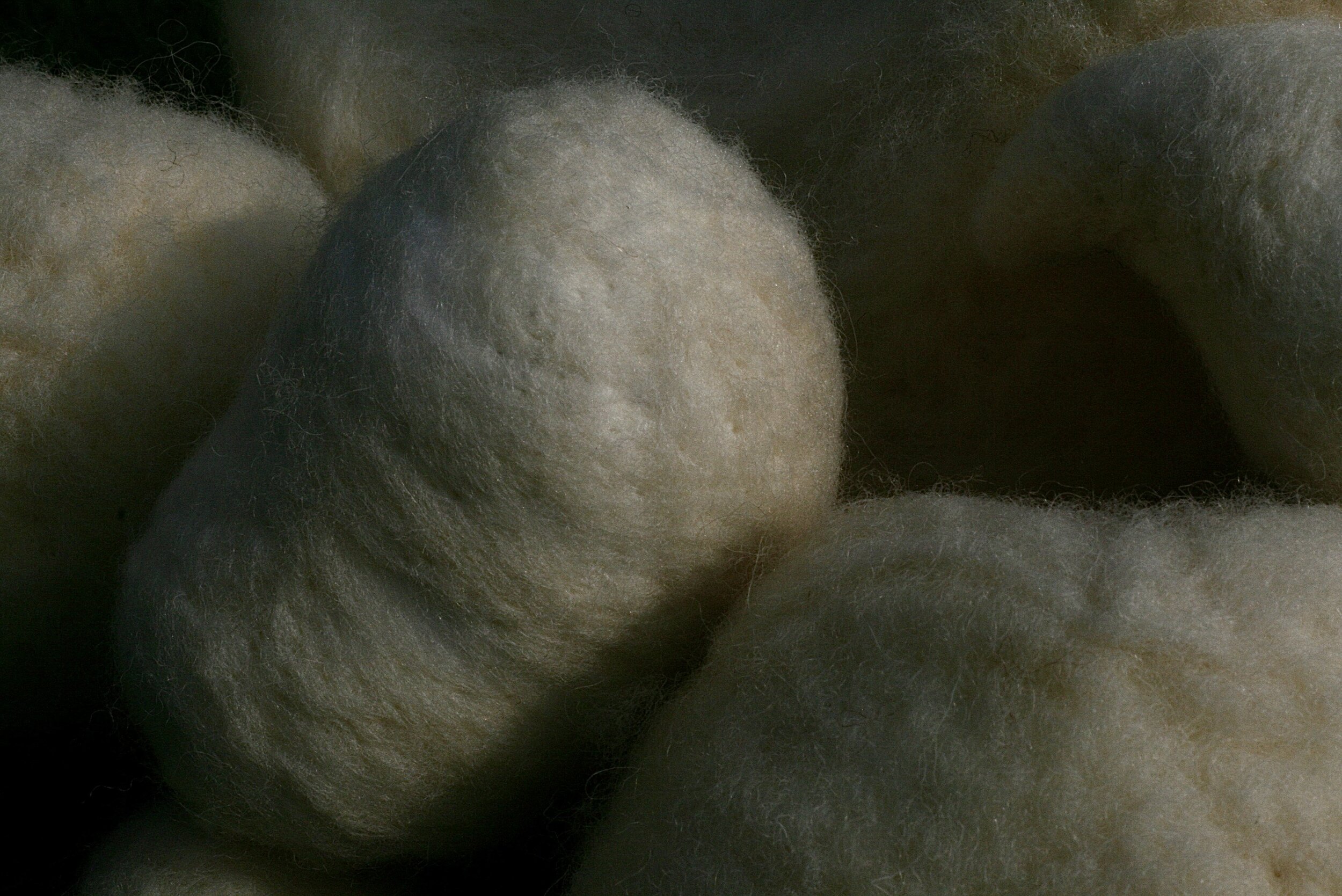
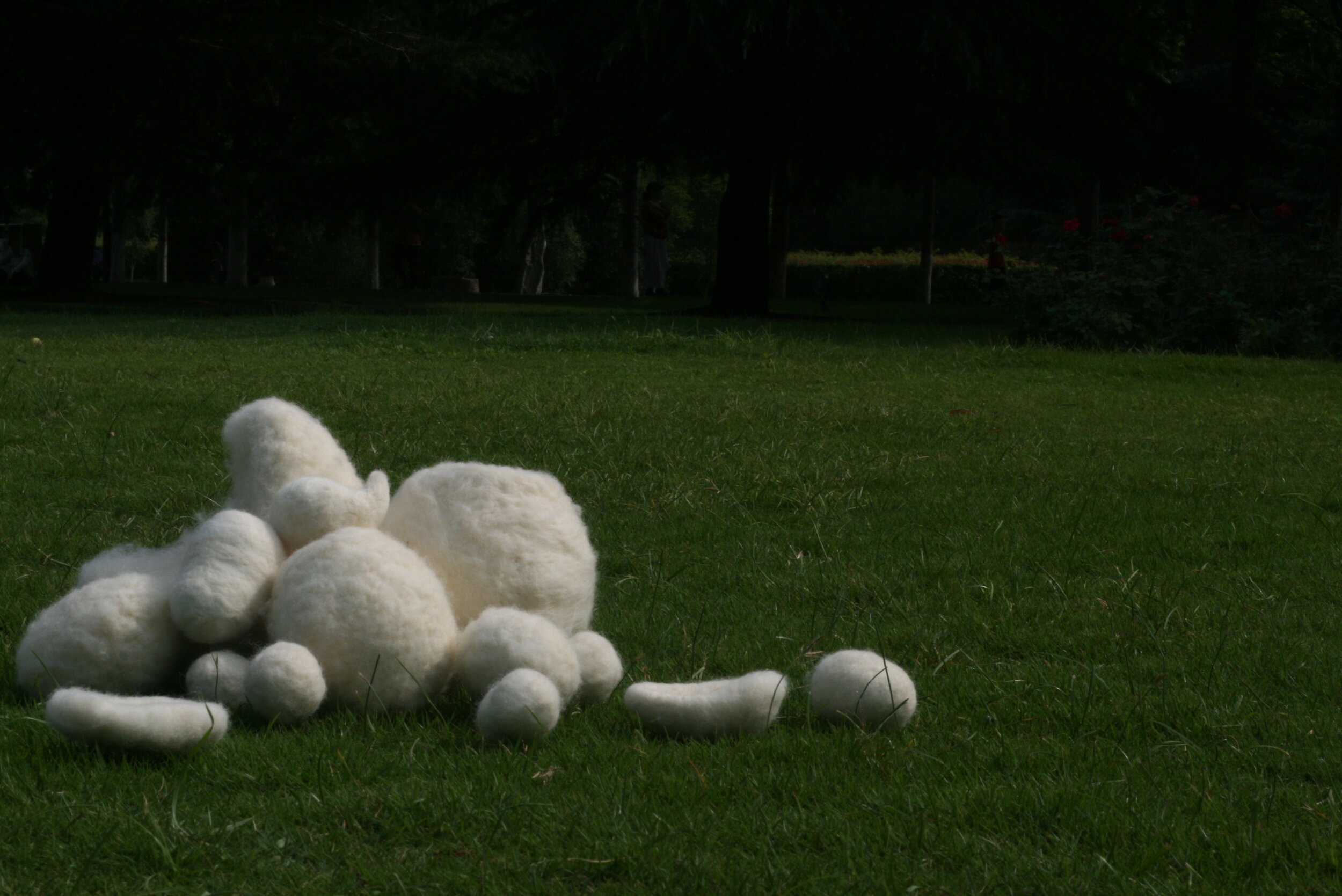
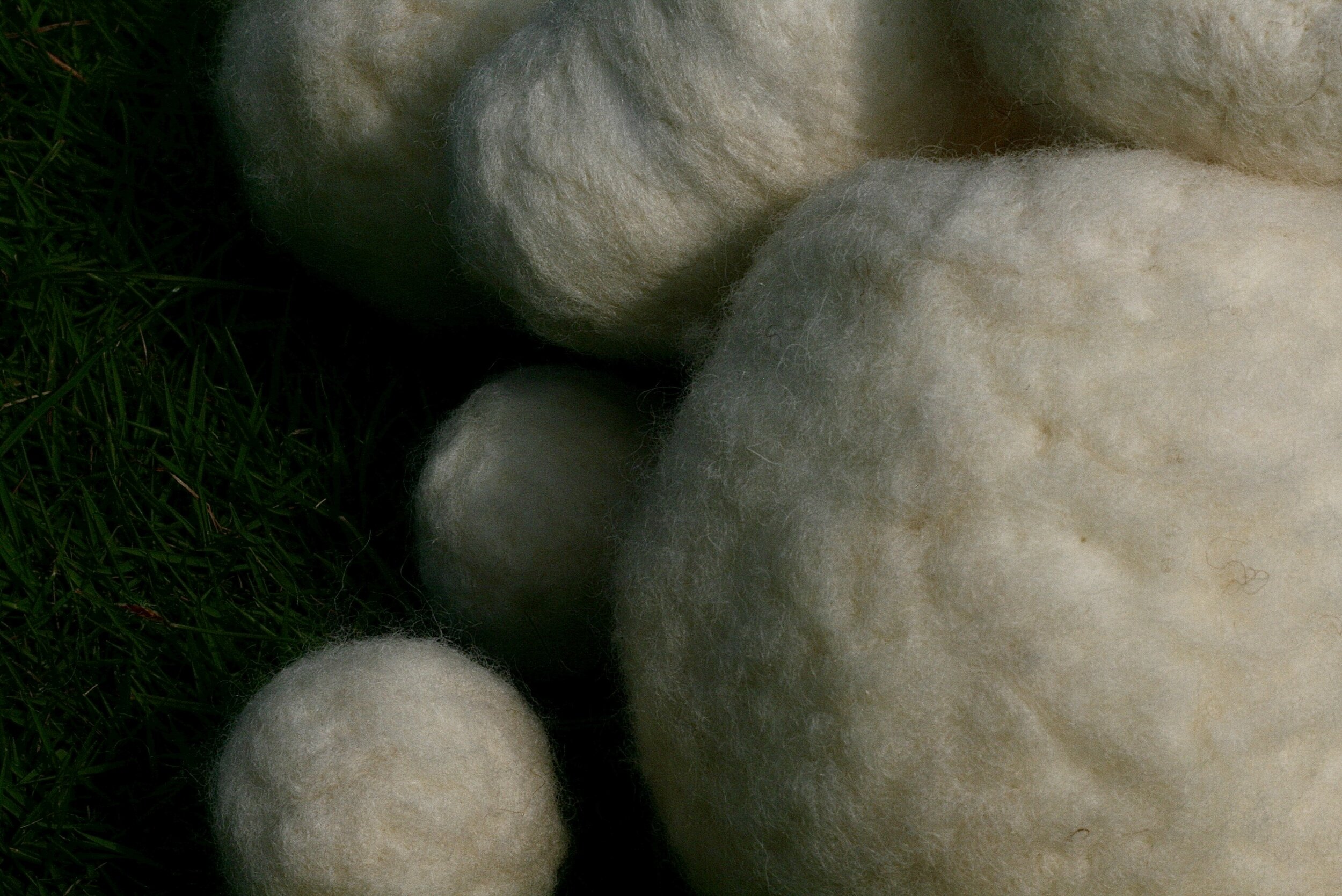
Complex Identities
The final section of the exhibition, “Complex Identities” broadens up the scope of the exhibition to reflections on “home” through multicultural identities. The artists deal with the complex realities of being a third culture kid or growing up in a mixed ethnic household, using mediums that span visual artworks and written works. We hope that by concluding with this section, viewers will be able to reflect back on their own lived experiences with the idea of home.
The final section of the exhibition, “Complex Identities,” broadens up the scope of the exhibition to reflect on “home” through multicultural identities. The artists’ works deal with the complex realities of being a third culture kid, growing up in a mixed ethnic household, and the impact of encounters with different cultures. We hope that by concluding with this section, viewers will be able to reflect back on their own lived experiences of “home.”
“So I Beat On” (2016, Revised 2020)
Shizheng “JJ” Tie
Johns Hopkins University
Luoyang City, China
“So we beat on, boats against the current, borne back ceaselessly into the past.”
The tragic ending remark of The Great Gatsby by F. Scott Fitzgerald greatly disappointed me, who had faith in the man who staunchly believed to recover his love with Daisy, diligently transformed from Gatz to Gatsby, and ceaselessly stared toward the green light.
I stubbornly believed this quotation to ruin this book; similarly, I condemned Americanized Chinese foods to ruin my new American life.
Born in Luoyang whose rich heritage cultured my Chinese identity profoundly, thirteen-year-old I left my hometown to America, disappointed by Chinese education which featured mechanically cramming in information, copying it onto exams, and expunging it when they were over for the next round of cramming.
After leaving my family and friends to a foreign land, I lived with an American host family. Endless were sleepless nights imbued by homesickness. Incessant were the apologies for unintentional grammar faux pas. However, my biggest challenge was not language barrier, but confusion and anxiety created by the new things I encountered.
Especially, I loathed Americanized Chinese foods: the syrupy sweet-and-sour sauce enveloping canned vegetables, the texture of chewy yet coarse fried chicken bits sliding down my throat, and the flavorless fortune cookies resembling nothing like exquisite Chinese pastry. I felt insulted by these phony Chinese foods, which sycophantically ditched their characters for American palates.
Resentfully, I longed for the thirteen years I spent in China, fondly surrounded by my family and friends and real Chinese food. Just like fearing the weird-looking entrees smothered in cheese, I feared the myriad people I encounter: their nations have names I couldn’t pronounce; their religions have customs I feared to insult; their cultures have views conflicting with mine. Stemming from this fear, my defensive stubbornness swore never to change.
But then I changed.
I changed as I stopped tenaciously searching for authentic Chinese restaurants to replace my past. Instead, I savored Mediterranean hummus, Texas steak, Japanese sushi, and Thai curry. Ditching my obsession with the “good old days,” I bravely embraced the unknown--whether it be delivery pizza or general American life. I realized that instead of “green light”, a daunting future compromising my past, America is the braided horses at Fulton County Fair, the drive-in movie nights, the yelling coach at track meets, the Nutcracker Ballet show with my friend-teacher whom I deeply appreciate.
So I beat on. My Chinese heritage is no longer a nostalgic wound hurting when I lament over my unfathomable future but a proud reminder of my undefeated spirit and new identities--an unconventional dream-seeker, an epicurean adventurer, and a studious pursuer restlessly staring at the “green light.”
Disliking Fitzgerald’s negativity toward recreating the past, I still dislike Orange Chicken and Chop Suey. However, I can now appreciate The Great Gatsby despite its “borne back ceaselessly into the past” while enjoying chili soup with my rice, because I’m brave enough to relish my future life in a multifaceted new world.
There is no Map 没有地图 (2019)
Angela Wang
Wellesley College
Nashua, NH, US
“The Chinese phrase “没有地图” translates to "There is No Map.” For third culture kids growing up in today’s globalized world, there is no clear map to guide through the cultural growing pains that might be experienced. After a trip to Croatia, I was struck by the minimalist wayfinding signs that were designed with universal icons for all travelers to comprehend. These simple wayfinding arrows appear in my piece as guiding markers for the viewer to indicate how to fold the map back up. Once opening the map, a memory book is revealed to show imagery of temporary homes, such as a hammock as a makeshift bed and a nostalgic kite from my childhood home in Chengdu, China. The map is signed on the back with both my English and Chinese names, reflecting my conflicting identity within two vastly different cultures.”



The Fridge (2017)
Bingcong Zhu
Columbia University
Shanghai, China
*Read the play here.
"The Fridge features a fight between an interracial couple, which begins simply with what should stay in their fridge and what shouldn't, but increasingly touches on their personal habits, and eventually, their perception of home and family. The inspiration for my play came from the household between my Chinese aunt and her Austrian husband. Even though they love each other very much and try their best to respect each other's habits as rational adults are supposed to, their predilections for certain food and drinks, and therefore bias against the other's different preferences, still lead to slight tensions at home every now and then. This makes me wonder if food preference is something so fundamental to our notion of home, that it can hardly be overcome even with our similarly deeply rooted "universal value" about respect and understanding.”
Characters:
Wife - a short, skinny, energetic Chinese woman between 25-35 years old. Had already lived in the US for a while before meeting and marrying her husband. May or may not have an accent. Likes to say "ah" every now and then. Think: Christmas Eve from Avenue Q, but less cynical. Her mom usually lives in China and has minimal exposure to the American culture.
Husband - a slightly chubby Caucasian man between 25-35 years old, with a cherubic, unshaven face. Think: Andy Dwyer from Parks and Recreation, perhaps a little more self-conscious. Loves his wife and his video games.
Mountains (2020); Rivers (2020)
Yushan (Nancy) Chu
Wellesley College
Beijing, China
“Landscape is an idea that evokes the most visual and aesthetic connotations in philosophical terms to denote a sense of space and location. At the same time, it represents a genre in traditional Chinese painting that focuses on the painterly depiction of mountains and rivers. I chose the same subjects to express my own sense of home, embodied and encompassed by the physical space of a room in Beijing, where I had only sporadically returned to during school breaks but suddenly had to stay for a long time. After spending two years in college in the US, the home that used to be filled with living experience and memories was replaced in my mind by a “landscape” – something to be looked at, not to live in. However, by representing this “landscape” with my own choices of medium, color, cultural motifs, and composition, I intend to re-establish my emotional connection with the physical place I call home while celebrating the cultural and social dimensions of that living experience. In doing so, I want to resume my agency over deciding my own cultural identity and sense of home.”

